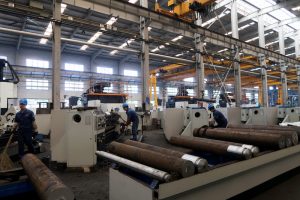In a first of its kind development for the carbon removals industry, UK’s Standard Chartered bank will provide commercial debt to a startup to facilitate the purchase of its credits.
The bank will make the loan to UK-based carbon removals start-up UNDO, to finance the delivery of 4,000 tonnes of its credits to British Airways.
The deal will also be insured by CFC, which would ensure a payout in the event not enough carbon credits are produced to repay the loan, Standard Chartered said.
The deal would ensure the credit risk on project developer UNDO is lowered, it added.
Also read: Microsoft, Google Announce Major Carbon Removal Deals
UNDO uses ‘enhanced rock weathering’ — a method that involves spreading silicate rock dust over farmland to speed up a natural process that captures carbon when it rains.
Carbon captured in this way can be locked away for more than 100,000 years.
The UN’s Intergovernmental Panel on Climate Change has said that carbon removal “will be necessary to achieve net negative CO2 emissions.”
By 2050, up to 10 billion tonnes of carbon dioxide needs to be removed from the environment annually, IPCC has said.
Recent research has found, however, that only about two billion tonnes of CO2 is being removed from the atmosphere annually at present.
Furthermore, despite the development of several carbon dioxide removal (CDR) technologies — like biochar, reforestation, direct air capture and enhanced rock weathering — much of the atmosphere’s carbon dioxide is being removed through forests alone.
A major reason for the slow adoption of carbon removal technologies has been a lack of scale, particularly because they require significant, and expensive, infrastructure.
The StanChart deal with UNDO could, thus, prove to be a breakthrough for carbon removals by opening a new financing pathway for the industry.
Financing breakthrough
The ability to suck climate-damaging carbon emissions out of the air is a central part of the world’s attempt to combat global warming, yet many of the technologies are nascent and unproven at scale.
The carbon removals industry needs an investment of $2 trillion annually for the world to achieve net zero emissions by 2050, according to the International Monetary Fund.
Many carbon removal projects have managed to get early-stage financing through grants, pre-payments and venture capital. But project developers such as UNDO have so far been considered too risky for banks to offer them corporate loans, StanChart said.
But its deal with UNDO “separates the cost of a project from the sale of its credits, giving the project developer financial flexibility, while reducing risks relating to delivery,” Standard Chartered said.
The bank said it hopes the deal’s structure can be replicated by other developers to scale up the carbon removals market.
Neither StanChart nor UNDO have disclosed the financial terms of the loan. The current rate of credits delivered through enhanced rock weathering stands at around $300 a ton, according to Reuters.
- Vishakha Saxena
























